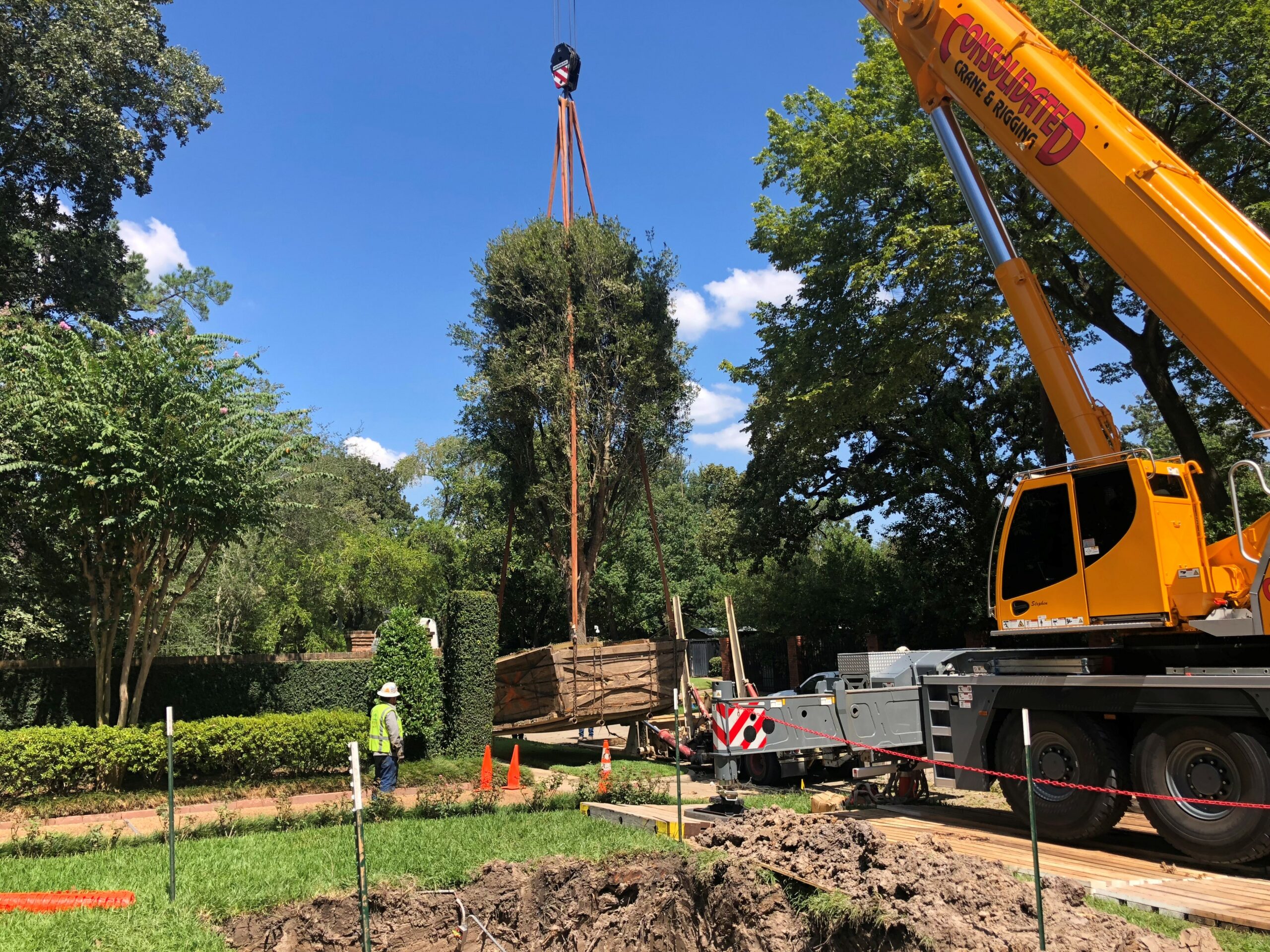Landscaping projects in Texas are always exciting. There are so many trees to choose from, from oaks and bur oaks to magnolias, pecans, dogwoods, cedars, persimmons, elms, pines, and bald cypresses. Due to the sheer size of Texas and its various climates, landscape and project developers can be as creative as they wish.
Planting trees to highlight your commercial project and increase the value of your development is a smart move. Trees provide shade and interest to any design and become focal points for the community to gather around, while their positive environmental impact is invaluable.
If your land already has trees but these are awkwardly positioned, Environmental Design Inc. can move them safely to a better location. We have a fleet of trucks and spades to dig out and move even the largest of trees and replant them in a new location where they will thrive.
We also have a large tree farm where we grow large trees and specimen trees for project developments. Choose from a wide selection of plants or let us consult you on which trees match your development before delivering them to your land.
Thanks to Texas’ generally favorable climate and weather conditions, planting and replanting trees is fairly easy. With the exception of summer, when it’s too hot for trees to build their root systems and absorb water, all other seasons are timely for your landscaping designs.
So, when is the best time to plant your trees in Texas and how can you make the most of the climate and weather?
When Should I Plant in Texas?
Newly-Planted Trees Need Water
It is generally agreed that the best time to plant trees and shrubs in most Texas areas is from fall to late winter.
Texas has hot summers that drain trees and plants of their water. If a tree hasn’t had time to develop its root system, it may not manage to get enough water from the soil to maintain its healthy growth.
Plant Your Trees in Fall in Texas
By fall, temperatures have dropped from their summer highs and there is no more intense heat. Air temperatures cool down but the soil remains warm enough for tree root systems to grow fast. These moderate temperatures and average rainfall help trees settle in their new location.
Freshly planted trees need to acclimatize themselves to their new growing conditions before the heat and dry weather settle in. Extreme conditions such as freezing weather or scorching temperatures cause trees discomfort, particularly ones that haven’t had the time and space to get used to their new location.
Root systems grow when soil temperatures are above 40 degrees Fahrenheit. This is the perfect combination for a freshly planted tree. The favorable soil temperature will help the rooting system expand and grow while the cooler air temperature will help minimize new top growth. This way, the tree will develop robust roots to take in soil nutrients without spending most of its energy on expanding its canopy and top growth. Once spring comes, the tree will be strong enough to start growing and blossoming.
Most areas in Texas don’t experience any winter freeze. Any freshly planted trees will most likely avoid having to go through harsh cold and freezing temperatures that could damage their roots and canopies. Most places in Texas have mild winters, with only the Panhandle seeing low temperatures and snow. Places around the coast, the southeast, and the southwest have milder winters that help trees establish themselves.
Burlap and Bare Root Trees
Burlap trees can be planted in fall before they start growing in spring.
Bare-root trees are preferably planted in late winter while they are still dormant. This will cause the least damage to their roots and their chances of survival.
Things to Remember Before You Plant Your Trees
Any time between October and March is great for planting trees in Texas. Before doing so, though, we suggest you take into consideration how big your tree will grow. Large trees like oaks grow significantly and you should give your tree plenty of space to expand its roots and canopy.
Likewise, sunlight exposure is crucial. If you plan on planting your trees close to your buildings, remember that tall buildings create shade. If your trees require full sunshine, their growth could be stunted.
Finally, don’t forget to check the soil quality of your land. Trees will grow happier where the soil matches their needs.
Call Environmental Design Inc. for Your Tree Selection, Tree Moving, and Tree Replanting Needs
If you want to increase the tree density on your land, we’d be happy to organize a tour of our tree farm and help you select trees that match your Texas location and fit in with your development. Additionally, we can safely move trees to a new location to help you make the most of your land and increase its overall value.




Recent Comments